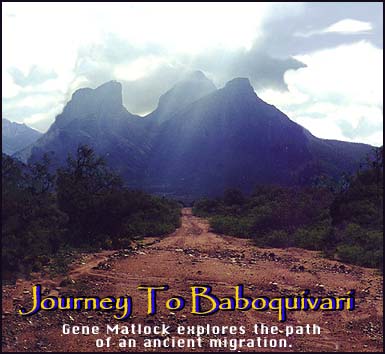
The O'Odham: Native-Americans
Hindu scholars have always claimed that in remotest times, their ancestors visited every part of the globe, mapping it accurately, and mining gold and copper in such places as Michigan, Colorado, Arizona, England, Ireland, Peru, and Bolivia. Known to us as "Indo-Europeans," they lost their grip on the world in about 1500 BC., retreating to what are now Afghanistan, Pakistan, and Northern India. However, they continued to visit the Americas in their large teakwood ships, many of them 250 feet long and five- to six-masted, until about 1200 A.D. After that, the sectarian fanaticism and territorialism of their religious leaders, rebellions among their conquered subjects, constant internecine rivalries, and troubles with Moslem invaders forced them into isolation.
No Westerner naively accepts India's claims of having once dominated the world. Right? Well, some of us do.
In an essay entitled On Egypt from the Ancient Book of the Hindus (Asiatic Researchers Vol. III, 1792), British Lt. Colonel Francis Wilford gave abundant evidence proving that ancient Indians colonized and settled in Egypt. The British explorer John Hanning Speke, who in 1862 discovered the source of the Nile in Lake Victoria, acknowledged that the Egyptians themselves didn't have the slightest knowledge of where the Nile's source was. However, Lt. Colonel Wilford's description of the Hindu's intimate acquaintance with ancient Egypt led Speke to Ripon Falls, at the edge of Lake Victoria.
The Hindus also claim that the gospel of their deity Shiva was once the religion of the world and the progenitor of all religions coming after it.
Isvar was and is especially visible (to discerning eyes) in our own Southwest as well as in Northern and Central Mexico. Some tribes even worshiped God Shiva's wives and consorts. Spanish priest, Andres Perez de Ribas wrote in his book, My Life Among the Savage Nations of New Spain, that a Northern Mexican tribe worshiped two deities: Viriseva and a mother goddess named Vairubai. Viriseva means "Lord Siva" in Sanskrit. Vairubai has to be (a mispronouncing of) Bhairava, another name of Siva's consort, Goddess Durga.
A few Hindu scholars insist that not all their gods and religious traditions are natives of the Indian subcontinent. When the ancient Nagas retreated to India, they also took back the deities and religious traditions they had acquired abroad, incorporating them into "Hinduism," a term meaning "The Indus Valley Way of Life."
Historian Chon states:
Though the pre-conquest era O'odhams were relatively primitive, the Spaniards admired them for their intelligence, industry, and high philosophy. Some Catholic missionary priests thought they were the progenitors of the Aztecs.
Edward Pococke stated in his book India in Greece,
But why do the Hindus and Buddhists worship Kuvera and Shiva in a barren peak and not in the Khyber mountain range itself? I don't want to get "mystical," but the "reason" for this anomaly is the world's best-kept millennium's-old secret. Besides, it's not the focus of this article.
while Vera or Vira = "Hero; Lord." The Nagas, also called Nakas and Nahu(a)s, were a highly civilized ruling, maritime and mercantile class who once inhabited what is now Afghanistan, Tibet, Pakistan, and Northwestern India. The Nag ("Self-Consuming Serpent") was one of their principal tribal emblems. The substance of Kuvera's teachings is that God, then called Dyau, Deo, Dyaus or Jyaus, put all the plants, animals, ores, and minerals on earth for Man's enjoyment. As long as Man protects the happiness and security of all humanity, he need not place any limits on his greed. Kuvera's teachings spread throughout the whole world.
"Originally, the Asuras or Nagas were not only a civilized people, but a maritime power, and in the Mahabharata, where the ocean is described as their habitation, an ancient legend is preserved of how Kadru, the mother of serpents, compelled Garuda (the Eagle or Hawk) to serve her sons by transporting them across the sea to a beautiful country in a distant land, which was inhabited by Nagas, The Asuras (Nagas) were expert navigators, possessed of very considerable naval resources, and had founded colonies upon distant coasts.""Asura" is the Indian equivalent of Assyria (really Asuriya and Asir) and the Persian Ahura of Zoroastrianism. It derives from the name of the ancient Hindu sun god Ashur. The Naga capital was called Oudh, Iodh, Yudh, and Ayodhya. Located near what is now Herat, Afghanistan, it is not to be confused with todays Oudh or Ayodhya in the Indian state of Uttar Pradesh. The citizens of Oudh were called Oudh-am and Otia-Am. Am = "People" in Sanskrit. In those days, only a few million people inhabited the earth. Most humans were cavemen and less. The Nagas didn't entrust their highly developed technologies to such aborigines. But they did teach them how to build simple thatch and adobe homes, and to raise vegetable and animal foods. They also taught them about the Creator of All Life, Dyaus or Jyaus. Even today the O'Odhams call it Jeoss or Josh. Joshi is one of God Shiva's many names. Some White Arizonians mistakenly insist that the O'Odhams derived this term from Dios (Spanish for "God"), Jesus, or Joshua.
The Nagas dug deep wells in the desert, siphoning water out of the ground with long, thick tubes. The exterior ends of these tubes were large and bulbous, and painted to look like human heads, in order to mystify the aborigines. The water spouted out from what looked like round, puckered human mouths. The heads had horns which were really handles for pulling tubes to different irrigation channels. As the flowing water caused these tubes to writhe and undulate like serpents, the primitive Arizonians thought they were real. In Kashmiri, Nag means "a snake, esp. a fabulous serpent-demon or semi-divine being, having the face of a man and the tail of a serpent, and said to inhabit Patala. In Kashmir, they are the deities of springs." (Grierson's Dictionary of the Kashmiri Language; p. 624, item 2.) The Kashmirians also called these siphons Nag-Beg (Snake-Lords). Patala was one of the ancient Indian names for "America." It's real meaning is "Underworld," but not an underground world. They used it as we often call Australia: "The Land Down Under." The Arizonian O'Odhams similarly called the water siphon Nah-Big. According to both Kashmiri and O'Odham legends, the Nah-Big was harmless. However, if someone "killed" it, the spring dried up - and for good reason. Without a proper siphon, needed water could no longer spew out of the well. Several Southwestern Indian tribes worship exact replicas of the Kashmiri Nag-Beg (siphon) in special religious ceremonies. However, some of them call it by other names. Certain O'Odham and other Native-American clans in the Southern Arizona and Northern Sonora area also call this mythical serpent Corua (KoROOah, with the "R" trilled as in our English "City"). It derives from Sanskrit: Krura-Sarpavat (Violent-Serpent); Kadruja (Serpent Mother Kadru's equally serpent son). Another O'Odham word for "snake," Vah-Mat, is nearly identical to the Kashmiri/Sanskrit Veh-Mar: "Poisonous-Snake." The O'Odham language contains an unusually high number of North Indian words. When the Nagas arrived in Arizona, they found a huge stone peak in the desert, resembling Kuvera and Shiva's (I-Itsoi's) Kailasa in nearly every way except one. The Indian Kailasa, also in a desert, is nearly four times higher above sea level than the O'Odhams' holy peak. To honor their spritual progenitor, the Nagas named this Arizona peak Babu-Kheever ("Grandfather" or "Illustrious Indian Immigrant" Kuvera), adhering closely to the exact pronunciation of the mineral-rich Kheever (Khyber) mountain range of Afghanistan. Baboquivari (Babo-kheeveri) has retained almost the same name after more than six millenniums. The O'odhams also call it Waw-Kiwulk, which sounds like "Vahv-Kivur'." Just as the Hindus, Jains and Buddhists call Kailasa the navel of the world, so do the O'odhams give Baboquivari the same distinction. Babo-Kheeveri and the Afghan Kheeveri mountains were supposedly filled with unlimited gold, copper, and precious stones. Even today, much of the gold mined in that part of Arizona keeps leaking endlessly out of the Babo-Kheeveri (Baboquivari) mountain range. Jutting upward at more than 7,750 feet above sea level, Baboquivari can be seen on a clear day from as far away as 80 miles, even from the Mexican side of the border. Few natural wonders equal the majesty and beauty of this spectacular peak. In my opinion, it is a "must-see" for any lover of Nature's wonders. You will notice that the mountain enjoys the close association of lesser peaks, forming a large trident. Being such a prominent landmark, Baboquivari keeps incoming undocumented Mexican aliens and drug smugglers from getting lost. That part of the desert also abounds in water-filled cacti to slake their thirst, including edible fauna and flora. Evidently, the INS knows about Baboquivari. On the day my wife and I visited the peak, we saw several of their vans in the area, waiting to pick up uninvited guests and transport them back to the border - or to prison. When I told the O'Odhams that I had learned about the unlimited quantities of gold within Baboquivari from Hindu books written millenniums ago, one woman moaned hopelessly, "Now that this news is out, the White man will even rob us of our God." She wasn't too far afield. The government has always wanted to probe the interior of Baboquivari. |
|
A Possible Historical Scenario
We may never know what this "Shiva's" real name was.
The Pimas call him Se-eh-ha; Siwa; Su-u (Elder Brother). The Papagos worship him as I'Itoi or I'Itsoi, which linguistically is nearly identical to "Isa."
Not yet united by a centralized government, the ancient Hindus weren't conscious of themselves as Indians - just as similar peoples separated by different tribes and kingdoms. All of them competed by fair and foul means for the resources of the world. Internecine rivalries tore them apart constantly.
During Shiva's Arizona reign, a powerful Indian emperor, Priyavarta, sent his armies to all the countries of the world, to unite all Indians and their colonial possessions as one nation. He appointed his sons as viceroys. One son, Sevana or Sewana, was sent to conquer and govern North America. Notice that he, too, was a "Siva." O'odham legends mention this Sewana whom they call Siwana. When I'Itoi or Se-eh-ha wouldn't submit to Priyavarta, he and Siwana met on the battle field. Ultimately, I'Itoi prevailed; Siwana was killed.
According to some Indian historians, later on, back in Southeast Asia, the volcano Krakatoa exploded violently, creating the China Sea. Our globe became extremely unsteady on its axis, causing rains, earthquakes, and floods to occur all over the world. The coastlands of Western India submerged by more than fifty feet and as many miles inland in some places. Even as you read this article, Indian archeologists are uncovering fabulous ruins lying just off the mainland, under the Arabian sea.
Dwarka, Indian deity Lord Krishna's capital city, is the focal point of these underwater digs. Dwarka may prove to be the greatest archeological dig in human history.
These floods forced millions of Indian refugees to flee to other parts of the world. When the Arizona desert flooded, the Pimas and Papagos took refuge on Baboquivari where I'Itoi or Se-eh-ha (Siva) helped them survive. After the waters had subsided, he helped the O'Odham re-establish themselves. Therefore, no matter to what religion they are converted, the O'Odham are always going to revere and respect I'Itoi.
|
|
Nearly all of today's O'Odham are Catholics. However, the Franciscan fathers tending to their spiritual needs allow them to set up the Swastika, I'Itoi or Isa's standard, on the altars of the Catholic churches there, even on the altar of San Xavier Mission church near Tucson. There are other Shaivite reminders among the O'odhams. O'Odham Catholic churches usually face east as the Shaivite temples do in India. And, like the Hindus, they bury their dead in an east-west direction. They also revere the Shiva-Linga or Pillar of Energy, usually erected in front of and some distance away from their churches, placed on a tiered pyramid or pyramidical mound, exactly as in India. However, nowadays the Shivling is a Christian cross. In the book he wrote in 1644, Father Ribas acknowledged that the Northern Mexican Indians worshiped Shivlings. "One of the padres, traveling along a trail near Guasave, observed an Indian suddenly depart into the woods. In curiosity they followed this Indian, presently coming upon him in the act of making reverence before a stone. This stone was about a vara (33 inches) in height, shaped in the form of a pyramid, and had some crude inscriptions carved upon it.During my visit at San Xavier mission, I also saw representations of the undulating serpent Nah-Big on the exterior of the church of San Xavier. And get this: The O'Odhams call their way of life Himday or Himdag! Hindi? I was especially intrigued by the Pima name for "Medicine-Man:" Javet-Makai. Dyaus-Pitar or Jyapeti (Japhet) is really another title of Shiva. Makai may be derived from Maga (Priest-Magician). Javet-Makai = Jyapeti Maga? DNA analysis may prove that today's O'Odhams are genetically related to the India-Indians. Arjuna, Krishna's companion in the Mahabharata Wars (fought on Northern India's Kuruksetra plains in about 3000 BC), was married to a Patalan (American) princess. Military forces from Patala, possibly even some O'Odham among them, fought in those famous wars. How did I'Itoi's deification get exported to India? Because Isvar was once the religion of all mankind, It could have been a partial contributor to all worldwide myths about Siva, eventually becoming consolidated in the Indian subcontinent. I'Itoi earned "godhood" on his own merits. Also, as a Hindu supreme leader, he was deified anyway. After all, the O'Odham and the Hindus do share the same India-originated "Way of Life." Hindu immigrants to this country often tell me that they see the Southwestern Native-Americans as long-lost brothers. They say that many Native-Americans tell them the same thing. If we use Sanskrit language resources, Hindu mythology, Shaivite practices and mutually identical holy names as measuring sticks, the kinship between Native-Americans and South Asians becomes easily verifiable, no matter what the "experts" say. Could there be a special political reason why "The Great White Father" doesn't want certain Native-Americans to know they're Himday?
"The descendants of this dynasty are still to be found in the southernmost part of India in Kerala. They are even now called Azhuva or Ezhava. The emperor Azi Dahaka, -- with two snakes around his neck -- was a devotee of Isvara." The Ezhavas' ships were said to have sailed all over the world.
The Hopis worship Siva under several of his names, one of which is Massawa (Maheswa?). The Hopis are ophiolators (snake worshippers). Thousands of years ago, a famous Naga cult called Hophiz lived near Kabul, Afghanistan. Orginally, this nation was named Oph (Serpent) + Gana (Group; Family) + Stan (Nation). "Afghanistan" evolved from "Oph-gana-stan." The Afghan Hophiz snake cult spread to Greece, becoming Ophis. The Ophis cult was popular in the ancient world, even among the Christian gnostics. Needless to say, it also found its way to the American Southwest. We may never know the exact "hows."
The name of the ancient Hopi village of Oraibi causes me to wonder whether the Hopi nation was a famous stronghold of Saivism, known even in India. This unusual word lacks only the "Bh" in Bhairavi, epithet of Goddess Durga. However, Grierson's Dictionary of the Kashmiri Language mentions another meaning of the term, which may explain exactly how and why Oraibi got its name: "Name of a certain class of lower deities who form Siva's host..." One of these is after the local godling of some locality or tract of country. Special localities protected by him are looked upon as sacred" (p. 129; item 44.) Was Southwestern United States an important Shaivite holy center in earliest times?
Other ancient Naga sea-faring miners, traders, conquerors and colonizers who left their bloodlines and names all over the Americas and the rest of the world were the Ute, Yuti, Yutiya, or Juti (Jutes). The Northern Mexican Indians called the invading Spaniards, "People-Who-Came-Before:" Yutiya ("Judeeya"); Yuti; Juti ("Jodee" or "Judee)." In Spanish, the word is usually spelled as Yori; Yuri. "R" is trilled as in "City." "Y" often approximates our "J." Because of the Spanish spelling, we can't see that this word is really the English "Jute.". Why did these Indians believe the Spaniards were Jutes? Juti now means "non-Indian Mexicans and Gringos." In Sanskrit, Juddhi; Yuddhi = "Conquerors." Our history books tell us that the "Jutes" were "Northern German or Danish tribes."
|

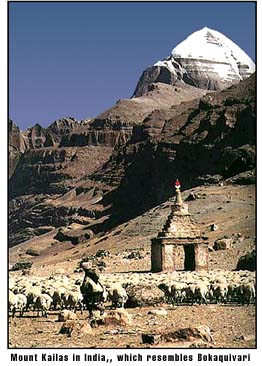 About 5,000 BC or earlier, a brilliant deified Phoenician Naga king and philosopher named Kuvera (also Kubera) learned how to smelt copper, gold, and other metals. These activities took place in the kingdom named after him, Khyber ("Kheeveri"), which consisted of a group of craggy mountains in what are now Southeastern Afghanistan and Northeastern Pakistan (i.e. the Khyber Pass). According to Hindu mythology, Kuvera and God Shiva lived in the totally barren, mineral-poor, goldless, frigid, lofty, bell-shaped or pyramidical peak of Kailasa in Western Tibet.
About 5,000 BC or earlier, a brilliant deified Phoenician Naga king and philosopher named Kuvera (also Kubera) learned how to smelt copper, gold, and other metals. These activities took place in the kingdom named after him, Khyber ("Kheeveri"), which consisted of a group of craggy mountains in what are now Southeastern Afghanistan and Northeastern Pakistan (i.e. the Khyber Pass). According to Hindu mythology, Kuvera and God Shiva lived in the totally barren, mineral-poor, goldless, frigid, lofty, bell-shaped or pyramidical peak of Kailasa in Western Tibet. 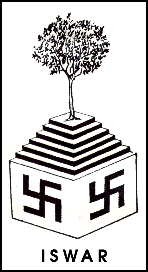 The innocent Arizona aborigines believed these Nagas from Oudh, Afghanistan (part of India until the late 1700s) were gods. They even named themselves Oudham, which they pronounced as O'Odham or O'Ot'ham. An ancient Sanskrit word for "brotherhood; fraternity" is Ton; Tahun. The Papagos called themselves Tohono O'Odham, or "Oudh-am Fraternity." Tohono now means "Desert" in the O'Odham language. The Pimas settled along winding rivers, which seemed to look like writhing serpents. They named themselves Akimel O'Odham. "Akimel" derives from the Sanskrit Ahi-Mahal (Great Serpent). This name eventually came to mean "River."
The innocent Arizona aborigines believed these Nagas from Oudh, Afghanistan (part of India until the late 1700s) were gods. They even named themselves Oudham, which they pronounced as O'Odham or O'Ot'ham. An ancient Sanskrit word for "brotherhood; fraternity" is Ton; Tahun. The Papagos called themselves Tohono O'Odham, or "Oudh-am Fraternity." Tohono now means "Desert" in the O'Odham language. The Pimas settled along winding rivers, which seemed to look like writhing serpents. They named themselves Akimel O'Odham. "Akimel" derives from the Sanskrit Ahi-Mahal (Great Serpent). This name eventually came to mean "River."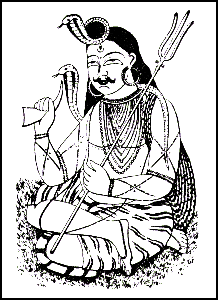 About 3,000 BC, a saintly Indian prince and high priest of the Kheeveri empire left Afghanistan for Arizona, to manage the mining operations at Baboquivari and govern the O'Odhams. In India, he is variously called Shiva, Siva, Shaveh, Suva, Su, Ish, Esh, Yesh, Isa, Itsa, Ishvara, Yishvara, Yeshva, Moshe, Mahesh, Mahisa, etc. The suffixes Va and Veh refer to someone who is vengeful and short of temper. Vara = "Blessings of." The prefixes Mo, Mu. and Mah means "Great." Ish, Esh, Yesh, Isa, etc., = "Material Universe" in both Sanskrit and Hebrew cabalism. From these Sanskrit elements we derived our term "Messiah," which in Sanskrit is Masiha, and Massee'akh in Hebrew. These terms were honorific titles of the highest ecclesiastical and leadership castes of that period in history. These supreme "Sivas," whether good, bad, or indifferent, were also regarded as earthly gods.
About 3,000 BC, a saintly Indian prince and high priest of the Kheeveri empire left Afghanistan for Arizona, to manage the mining operations at Baboquivari and govern the O'Odhams. In India, he is variously called Shiva, Siva, Shaveh, Suva, Su, Ish, Esh, Yesh, Isa, Itsa, Ishvara, Yishvara, Yeshva, Moshe, Mahesh, Mahisa, etc. The suffixes Va and Veh refer to someone who is vengeful and short of temper. Vara = "Blessings of." The prefixes Mo, Mu. and Mah means "Great." Ish, Esh, Yesh, Isa, etc., = "Material Universe" in both Sanskrit and Hebrew cabalism. From these Sanskrit elements we derived our term "Messiah," which in Sanskrit is Masiha, and Massee'akh in Hebrew. These terms were honorific titles of the highest ecclesiastical and leadership castes of that period in history. These supreme "Sivas," whether good, bad, or indifferent, were also regarded as earthly gods. 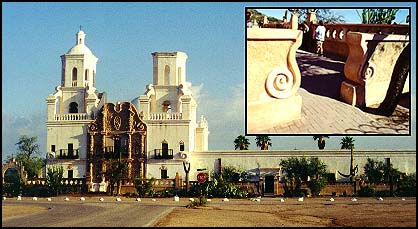
 Some tribes, such as the Huicholes in Central Mexico, even remember from what Indian seaport they left for America - Aramra in Gujarat. The Huicholes revere a part of the beach at the old Mexican seaport of San Blas, Nayarit, as Aramara, "Place of Origin of the Huicholes." Millenniums ago, Gujarat was called Jukhar. Juj-Kha is an O'Odham name for "Mexicans." The Navajos call them Nakaii (Nagas). The Apaches claim to be Inde (Indus People.) They worship Shiva as Yusn. In Sanskrit, Yishan = "Shiva." Apache = "Enemy" in O'Odham. In Sanskrit, Apachnan = "Destroyer." Another name of the Zunis ("Zoonyees") is Ashiwi (Azhuva?, "Way of the Serpent," in Sanskrit). Two of their principal deities are Shivani and Shiwanikoya. Zoonya (Zuni?) and Zeenya ware epithets of ancient Kashmir. According to Indian historian K. P. Chon, the Naga Azhuvas, perhaps the forefathers of the Zunis, were India's oldest ruling dynasty. He said that they ruled for more than a thousand years.
Some tribes, such as the Huicholes in Central Mexico, even remember from what Indian seaport they left for America - Aramra in Gujarat. The Huicholes revere a part of the beach at the old Mexican seaport of San Blas, Nayarit, as Aramara, "Place of Origin of the Huicholes." Millenniums ago, Gujarat was called Jukhar. Juj-Kha is an O'Odham name for "Mexicans." The Navajos call them Nakaii (Nagas). The Apaches claim to be Inde (Indus People.) They worship Shiva as Yusn. In Sanskrit, Yishan = "Shiva." Apache = "Enemy" in O'Odham. In Sanskrit, Apachnan = "Destroyer." Another name of the Zunis ("Zoonyees") is Ashiwi (Azhuva?, "Way of the Serpent," in Sanskrit). Two of their principal deities are Shivani and Shiwanikoya. Zoonya (Zuni?) and Zeenya ware epithets of ancient Kashmir. According to Indian historian K. P. Chon, the Naga Azhuvas, perhaps the forefathers of the Zunis, were India's oldest ruling dynasty. He said that they ruled for more than a thousand years.